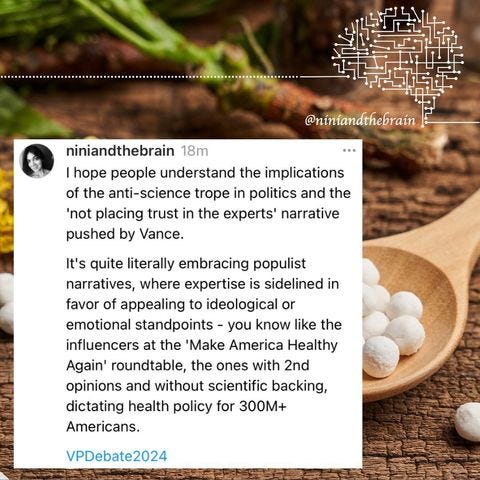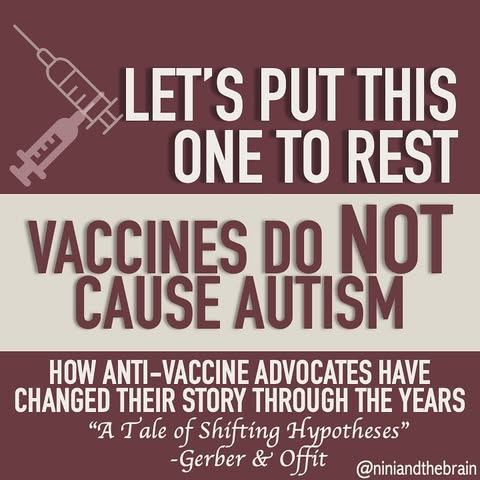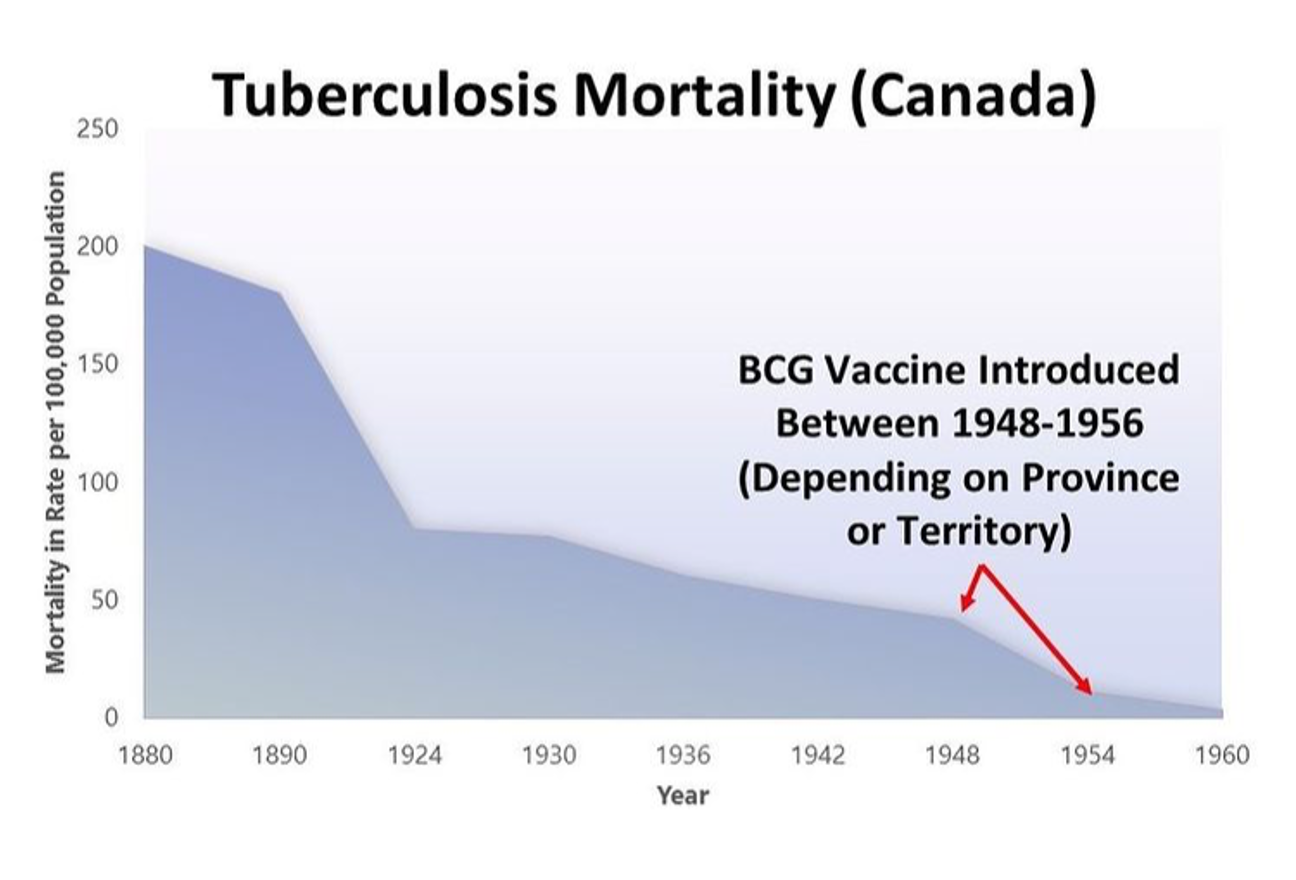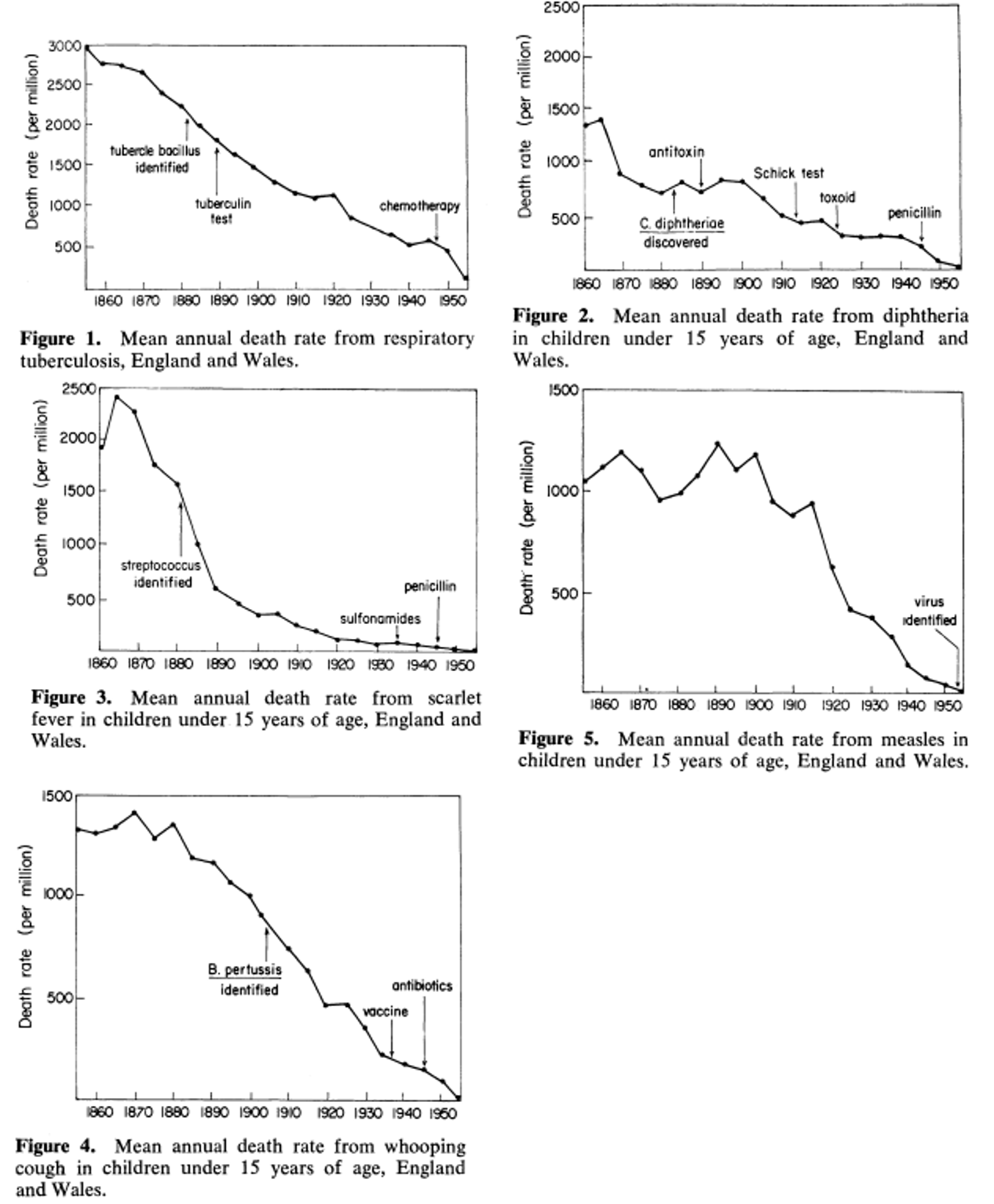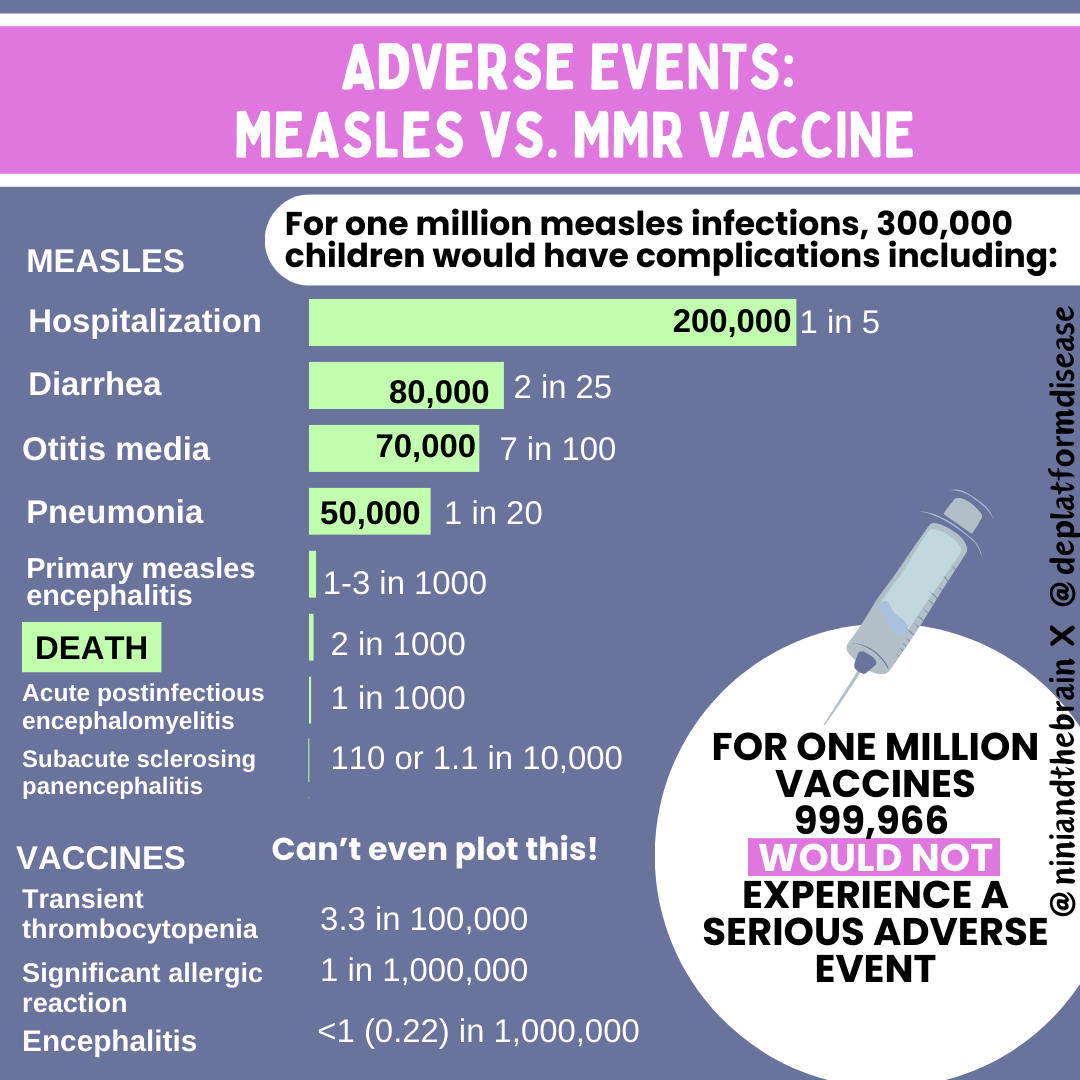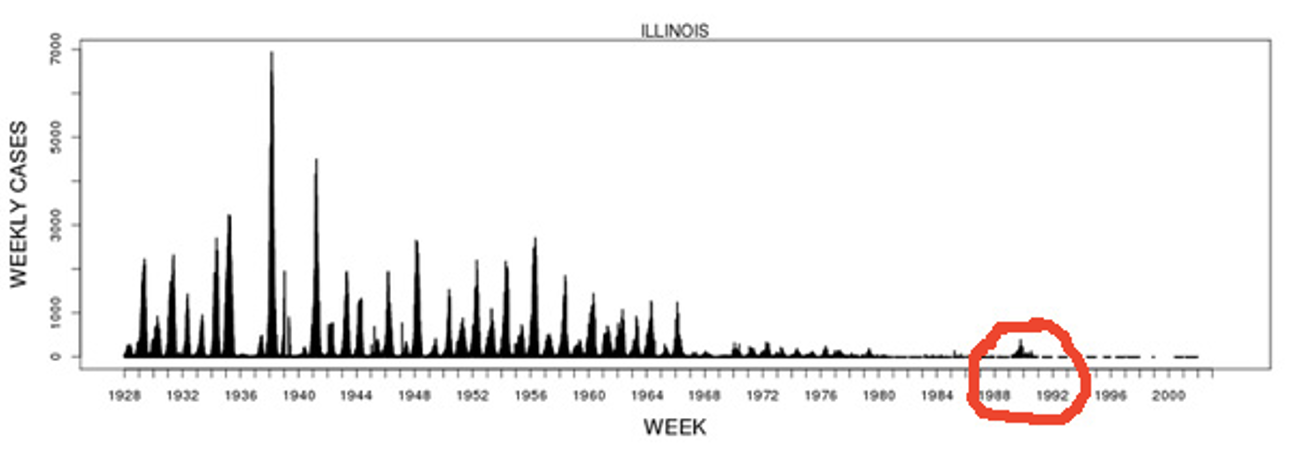RFK Jr.: The Anatomy of Deception
A deep dive into his manipulative and flawed takes on data. His nomination (and potential appointment) isn’t just the rejection of science and expertise; it is the blatant celebration of ignorance.
In the annals of scientific history, few figures embody the dangers of anti-science as starkly as Trofim Lysenko. A Soviet agronomist who rejected Mendelian genetics in favor of politically convenient but flawed agricultural theories, Lysenko rose to prominence under Joseph Stalin, wielding influence that led to disastrous consequences. His rejection of genetic science in favor of "vernalization" and other pseudoscientific methods led to widespread crop failures and contributed to famine. More disturbingly, Lysenko’s dogma was enforced not just through state policy but through repression—scientists who opposed him were censored, imprisoned, or even executed. Lysenkoism remains a cautionary tale about what happens when ideology overrides empirical evidence, a phenomenon that extends far beyond Soviet agriculture.
In more recent history, in South Africa, HIV/AIDS denialism influenced public health policy from 1999 to 2008, during the presidency of Thabo Mbeki. Mbeki criticized the scientific consensus that HIV does cause AIDS and instituted policies denying antiretroviral drugs to AIDS patients and other therapies to prevent mother-to-newborn transmission, favoring instead herbal remedies.
Mbeki was influenced by Peter Duesberg, a proponent of AIDS denialism, who suggested instead that HIV is a mere 'passenger' virus, and that AIDS is actually caused by environmental toxins or the antiretroviral drugs used to combat the disease. In 2000, Mbeki put Duesberg on a panel of AIDS advisers along with several others who denied that HIV causes AIDS. This led to the avoidable deaths of over 330,000 individuals due to AIDS and more than 35,000 infants being born with HIV infections that could have been prevented.
Science denialism and pseudoscience have tangible, real-world consequences. As I often say, try launching a satellite into orbit while insisting the Earth is flat—it simply wouldn’t work. This example is easy to grasp because we have overwhelming evidence that our planet is a sphere (yes, technically an oblate spheroid).
While I am always open to discussing different policy views, I draw the line at anti-science fringe views, even more so when the evidence is overwhelming against them.
RFK Jr. embodies science denialism
Few embody science denialism as well as RFK Jr. Outside of being an AIDS denialist, Kennedy has persistently claimed a link between vaccines and autism, despite extensive and exhaustive scientific research debunking this connection.
He has repeatedly (again, let me emphasize, repeatedly) misrepresented data to fit his anti-vaccine narrative, as is commonly seen in pseudoscience, all while vaccinating his children and requiring vaccines at events hosted at his home. This, for instance, is a screenshot of his Instagram account before it was banned a few years back:
He coupled this with corrupted graphs to make it seem as though vaccines are not pivotal in controlling infectious diseases and reducing mortality.
But the analysis is FLAWED and only tells you part of the story. Vaccines have reduced infectious disease cases, and deaths and alleviated the burden of these diseases on our healthcare system. His graphs just don’t reflect that.
RFK Jr. typically likes to misuse 3 ‘publications’ to make this claim and the figures from his post are from these.
Edward’s Kass address in 1970 to the joint meeting of the Infectious Diseases Society of America and Tenth Interscience Conference on Antimicrobial Agents and Chemotherapy (not really a paper). The Journal of Infectious Diseases, Vol. 123, No. 1 (Jan., 1971), pp. 110-114
McKinlay JB, McKinlay SM. The questionable contribution of medical measures to the decline of mortality in the United States in the twentieth century. Milbank Mem Fund Q Health Soc. 1977 Summer;55(3):405-28.
Guyer, B., Freedman, M. A., Strobino, D. M., & Sondik, E. J. (2000). Annual Summary of Vital Statistics: Trends in the Health of Americans During the 20th Century. PEDIATRICS, 106(6), 1307–1317
In fact, the plots he used for this are adapted (more like adulterated) from Edward’s Kass address in 1970 to the joint meeting of the Infectious Diseases Society of America and the Tenth Interscience Conference on Antimicrobial Agents and Chemotherapy. These plots do show reduced mortality rates before vaccines were introduced.
But context is critical.
Mortality rates are influenced by socioeconomic status, access to health care, quality of treatment, and a wide range of other factors. As these factors change, mortality rates inevitably change. RFK Jr. has argued that other factors contributed to the decline in deaths from infectious diseases and that these diseases “disappeared” before vaccines and medical interventions were available to diminish the importance and need for vaccines. But this is NOT something we don’t know already. It is well known that improvements in sanitation, socioeconomic status, access to healthcare, and interventions in public health (and public health departments) led to fewer deaths. The data reflects that.
It is the very institutions he often rails against that have improved outcomes.
Would you stop training your pilots just because of improved aircraft design? No! If we did, we would not have an almost negligible fatality rate from commercial aircraft.
Also, note the gross misrepresentation of the data in his graphs. He is purposely excluding all spikes in mortality. There was no herd immunity to these diseases, which means outbreaks and deaths were still happening. This is why spikes in the data are important – they show us a trend that made the spread worse. By removing spikes, he is hiding the fact that outbreaks were still occurring, despite improvements made by public health interventions.
Kennedy’s graphs do not tell us ANYTHING about the outcomes of those who were infected and survived. The use of mortality data has limitations. Mortality is an incomplete indicator of disease burden in that it does not account for varying numbers of potential years of life lost at different ages or for productive years lost because of disability. Indicators such as the DALY, used as the principal metric in the Global Burden of Disease project, would provide a different perspective on the overall burden of disease.
About one child out of every 1,000 who get measles will develop encephalitis (swelling of the brain) that can lead to convulsions and can leave the child deaf or with intellectual disability. Subacute sclerosing pan encephalitis(SSPE) is a very rare, but fatal disease of the central nervous system that results from a measles virus infection acquired earlier in life. SSPE generally develops 7 to 10 years after a person has measles, even though the person seems to have fully recovered from the illness. Among people who contracted measles during the resurgence in the United States in 1989 to 1991, 4 to 11 out of every 100,000 were estimated to be at risk for developing SSPE. The risk is higher before two years of age.
He also conveniently excludes the last 70 years of data with these butchered plots - which would clearly indicate that despite improvements in sanitation and modern medicine, outbreaks still occur when immunization coverage drops.
During the first 26 weeks of 1989, local and state health departments reported a provisional total of 7335 measles cases to the CDC — a 380% increase over the 1529 cases reported for the same period in 1988; at least 10 measles-associated deaths were also reported. The increase primarily involved unvaccinated racial and ethnic minority children less than five years of age residing in inner-city areas.
Outbreaks are still very much present today.
More recent data from varicella also shows us that despite other public health advancements, outbreaks (and deaths) were still common in the US and that the vaccine was instrumental in relinquishing these.


Data on hepatitis B deaths has only been available since 1979. People who die from hepatitis B typically do so after a chronic infection, which can last several decades before progressing to liver failure, cirrhosis, or hepatocellular carcinoma (liver cancer). Because of this long disease progression, a decline in hepatitis B deaths became evident only several years after the widespread introduction of the hepatitis B vaccine, as it takes time to observe reductions in long-term complications and mortality rates. The data indicate the introduction of the vaccine has alleviated both the disease burden and the number of deaths from chronic Hep B infections, trailing the fast decline in the number of cases.

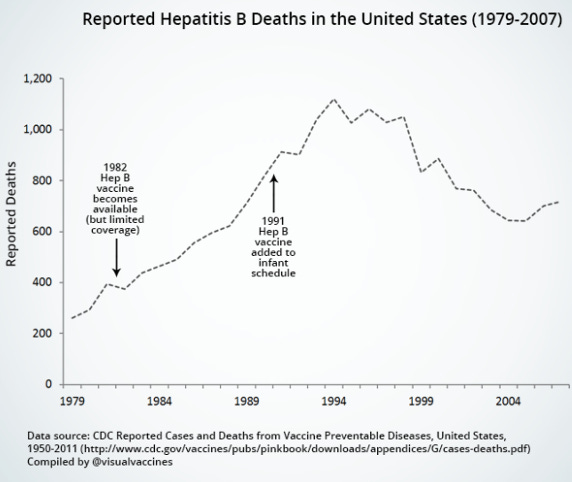
RFK Jr. also excludes data from other countries to fit his narrative. More than 140,000 people died from measles in 2018, according to the World Health Organization (WHO) and the United States Centers for Disease Control and Prevention (CDC). These deaths occurred as measles cases surged globally, amidst devastating outbreaks in all regions. Most deaths were among children under 5 years of age.
By focusing on the risks of vaccines while ignoring the broader context and their benefits, he has created a distorted perception of vaccine safety over the years.
During the COVID-19 pandemic, RFK Jr. propagated several falsehoods, such as asserting that COVID-19 was "ethnically targeted" to spare certain populations, and promoting unproven treatments like hydroxychloroquine and ivermectin, contrary to established medical guidelines. The rejection of science and public health measures resulted in major surges of disease and mortality in the US, primarily along party lines (by county).
He has advocated for banning fluoride in drinking water, despite its well-documented public health benefits. A real-world example of the consequences of such a policy can be seen in Juneau, Alaska, which stopped fluoridating its water in 2007. Studies conducted afterward showed a significant rise in dental caries among children. Medicaid dental claims from 2003 to 2012 revealed that children under six experienced an increase in caries-related procedures, rising from an average of 1.55 to 2.52 annually. This increase not only impacted children's dental health but also led to higher treatment costs, with an estimated additional $300 per child per year for the youngest age group. One of the better ways to gauge cause and effect is dose-response studies or unintended events like this one. I will be tackling some of the controversial fluoride studies published as of late separately.
Despite his denial, RFK Jr. contributed to the deadly measles outbreak in Samoa. Roughly 5707 measles cases and 83 measles-related deaths were reported and 87% of the deaths reported were in children younger than 5 years. He did this while profiting from spreading fear, selling books, alternative treatments (supplements, detox kits), books, courses, paid memberships., speaking engagements, and social media monetization from fear-driven narratives.
The MAHA movement, led by RFK Jr., oversimplifies chronic disease by attributing it to specific food ingredients. This narrative is not only misleading but also potentially harmful. By fixating on factors like food dyes and seed oils—while ignoring the more significant contributors to disease—such as walkability, dietary patterns, social determinants of health, healthcare accessibility (where the U.S. ranks last), paid leave policies, and economic and racial disparities—it diverts attention from the real systemic issues. This misguided focus risks exacerbating the already declining health of Americans. I highly advise following @jessicaknurick and her blog.
Furthermore, RFK Jr. has called for dropping research on infectious diseases to focus on chronic illness - this underscores a very basic misunderstanding of how they are intertwined. The introduction of the human papillomavirus (HPV) vaccine has led to a significant decline in cervical cancer rates. In the United States, data from the Centers for Disease Control and Prevention (CDC) indicate that among vaccinated women, the percentage of cervical precancers caused by HPV types most commonly linked to cervical cancer has decreased by 40%. Similarly, a study in Scotland found that women vaccinated between ages 14 and 22 with three doses had a significantly lower rate of cervical cancer compared to unvaccinated women, demonstrating an estimated vaccine effectiveness of 78%, dropping to ZERO cases of cervical cancer when immunized between the ages of 12 and 13.
Infectious diseases are key factors contributing to many chronic diseases. Epstein-Barr virus is associated with multiple sclerosis, H. Pylori is related to stomach cancer and as outlined above, Hepatitis B can lead to liver cancer. We have evidence of this because treatments against these diseases are related to improved outcomes.
Similarly, with the COVID-19 pandemic, we have seen not just a strain in healthcare systems when infectious diseases sprawl out of control, but also aggravation of pre-existing conditions and the introduction of new ones, as well as a reduction in life expectancy with disease outbreaks.
The Hallmark of Pseudoscience: It refuses to change its mind
A defining characteristic of pseudoscience is the refusal to change one’s stance, even when confronted with clear, contradictory evidence. Unlike legitimate scientific inquiry, which begins with a hypothesis and adjusts based on data, pseudoscience starts with a predetermined conclusion and remains rigid. This intellectual stubbornness is exemplified by Robert F. Kennedy Jr., who has openly admitted that no amount of new data could change his mind about vaccines (all while vaccinating his own children, as we recently learned).
In 2014, RFK Jr. published a book vilifying thimerosal, a mercury-based preservative in vaccines, as a dangerous neurotoxin and linking it to autism. Vaccines, except some formulations of the flu vaccine, do contain thimerosal, but the type of mercury they use is ethylmercury, which is cleared from the body quickly and harmlessly. Regardless, extensive research has thoroughly refuted the claim that thimerosal in vaccines is linked to autism.
1980–1990 (Sweden & Denmark): Autism rates remained stable even when thimerosal-containing vaccines were in use, including periods of 200 µg of exposure.
1961–2000 (Denmark): A study comparing autism rates in children exposed to 200, 125, or 0 µg of thimerosal found no correlation between thimerosal exposure and autism.
1990–1996 (Denmark): Autism rates actually increased after thimerosal was removed from all vaccines.
1990–2000 (Sweden & Denmark): Despite the removal of thimerosal from vaccines in 1992, autism rates continued to rise steadily through 2000.
1987–1998 (Quebec): The highest rates of pervasive developmental disorders were found in cohorts exposed only to thimerosal-free vaccines.
1991–1999 (CDC Study - USA): A study of 140,000 children found no link between the MMR vaccine and autism.
Instead of reassessing his position in light of this overwhelming evidence, Kennedy simply shifted his argument. By 2023, his focus had evolved into a broader, more nebulous claim—that the cumulative effects of vaccines remain unknown. This became the premise of his next book, a textbook example of goalpost-moving. This strategy—making an alarming claim, having it disproven, and then pivoting to a new, equally baseless assertion—is a classic tactic of the anti-vaccine movement.
It’s not just misinformation; it’s a calculated grift that preys on public fear and scientific illiteracy.
This argument is too flawed, and I have discussed this extensively.
Don’t believe me, take it from a true expert: Paul Offit.
Fewer Antigens, More Vaccines: The number of antigens in today’s vaccines is significantly lower than those received in the 1980s, even though children now receive more vaccines overall. Advances in vaccine technology have allowed for more targeted immune responses with fewer antigenic components.
Combination of vaccines is just as effective: Receiving multiple vaccines at once induces an immune response comparable to getting them separately, ensuring efficiency without overwhelming the immune system.
Everyday Exposure to Viruses Is Greater Than Vaccine Load: A child’s immune system routinely encounters 4–6 viruses per year, which is far greater than the antigenic exposure from vaccines. (As a side note, my household has been battling continuous colds since mid-November, highlighting how frequently we are naturally exposed to pathogens.)
Natural Infection Poses a Greater Immune Challenge Than Vaccines: The immune response triggered by viral replication is far more intense and taxing on the body than the controlled exposure provided by vaccines. Vaccines prepare the immune system without the severe risks associated with actual infections.
Autism Is Not an Immune-Mediated Disease: There is no scientific basis to link autism to immune system dysfunction or vaccination. Autism is a neurodevelopmental condition, and extensive research has dismantled any connection between vaccines and autism.
Vaccination Does Not Weaken General Immunity: Studies show that vaccinated and unvaccinated children have no differences in their susceptibility to infections that vaccines are not designed to prevent. Vaccination does not compromise the immune system but rather strengthens it against specific, dangerous diseases.
This shift in hypothesis has been happening since Andrew Wakefield published his now-retracted Lancet article that suggested that MMR vaccines triggered intestinal inflammation, which allowed peptides to reach the brain and impact developmental processes, causing autism.
The study in question had several critical flaws that undermined its credibility. It lacked a control group, making it impossible to draw meaningful comparisons. Additionally, gastrointestinal (GI) symptoms in the studied children appeared before their autism diagnoses, contradicting the claim that the vaccine caused these symptoms. Extensive research has found no link between the MMR vaccine and GI inflammation, and the peptides allegedly affecting brain development were never identified. Furthermore, autism prevalence in England at the time was approximately 1 in 2000, meaning that, statistically, around 25 children would have been diagnosed with autism shortly after receiving the vaccine by chance alone. Andrew Wakefield, was also found to have financial conflicts of interest, as he had been paid by attorneys preparing lawsuits against vaccine manufacturers. Due to these ethical and methodological failings, the study was not just retracted, but Wakefield lost his medical license.
Despite all this, multiple studies were carried out to refute this claim. This just wasn’t enough, as it never is with arguments construed around ideology.
RFK Jr.’s shift to saying vaccines aren’t needed because mortality rates were already dropping occurred after his other claims had been refuted, one again demonstrating rigidity in his views, the opposite of what science is all about.
For those who claim this was in the past, may I remind you that more recently, on Joe Rogan, he asserted that the 1918 Spanish Flu Pandemic was induced by the flu vaccine, which wasn’t even developed until the 1930s and 1940s. One of my favorite science communicators, @dr.noc called him out.
A Celebration of Ignorance
What we are seeing with RFK Jr., Oz, and Bhattacharya as cabinet nominees for agencies that guide health in the US isn’t merely a rejection of expertise; it’s a celebration of ignorance.
Over the past century in the U.S., public health advancements have contributed to 25-of-the 30-year increase in life expectancy. We get to worry about chronic illness today largely because most of us are not dying from infectious diseases before our first birthday. Infectious diseases used to be the three leading causes of death in the US. Infant mortality has dropped from 165 per 1000 (that is 1 in 6!) in 1900 to roughly 5 in 1,000 (which is too high for the US) today.
The 10 greatest public health achievements include:
Vaccination – Preventing deadly diseases and outbreaks.
Motor-vehicle safety – Reducing fatalities through seat belts, traffic laws, and safer vehicles.
Safer workplaces – Decreasing injuries and occupational hazards.
Control of infectious diseases – Through sanitation, antibiotics, and disease surveillance.
Decline in deaths from coronary heart disease and stroke – Due to improved treatments, lifestyle changes, and preventive measures.
Safer & healthier foods – With food safety regulations and better nutrition.
Healthier mothers & babies – Lowering infant and maternal mortality rates.
Family planning – Providing access to reproductive health and contraception.
Fluoridation of drinking water – Preventing tooth decay and improving dental health.
Recognition of tobacco use as a health hazard – Leading to policies that reduced smoking-related illnesses.
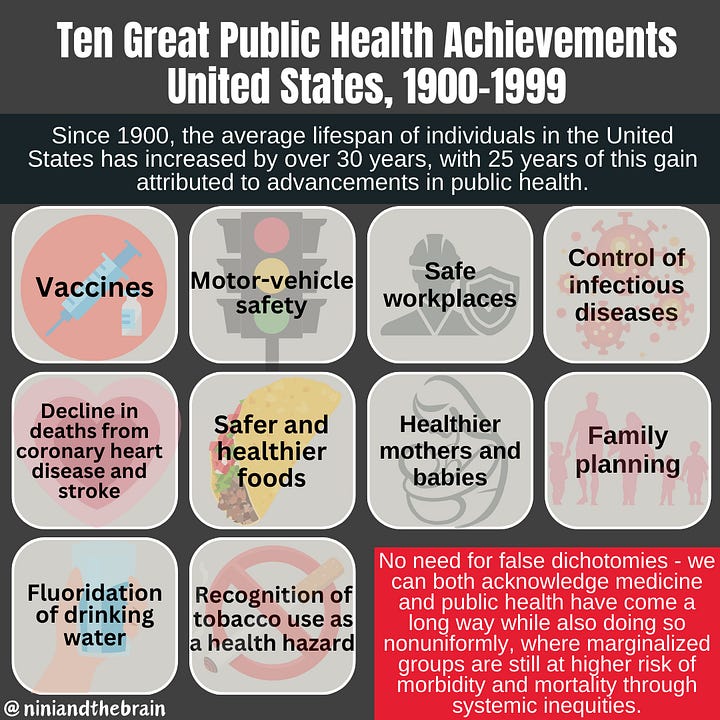

RFK Jr. is a science denier who threatens this hard-earned progress, promoting misinformation that undermines public trust in health advancements. It will have catastrophic consequences for the nation’s health. It’s not just absurd; it’s dangerous.
More importantly, this glorification of ignorance is deeply harmful to our nation's progress across all sectors—health, infrastructure, economic prosperity, and innovation. We are witnessing, in real-time, other nations surpassing us in technological advancements, while appointments like this send a dangerous message: that education and science are dispensable. This appointment, coupled with the now rescinded NIH’s grant suspension and attack on public health risks losing a whole generation of scientists and engineers. This not only undermines our ability to compete globally but also jeopardizes our national security, weakens our standing as a technological leader, and compromises public health.
You should be outraged. This is disrespectful to the health of every American (yes, even those with private health insurance as we share resources like hospitals and staff).
I'm Nini, a proud Colombian hailing from Barranquilla. My expertise spans from sensor design to neural interfaces, with emphasis on nanofabrication, data science & statistics, process control, and risk analysis. I am also a wife and a mom to one little girl. TECHing it Apart emerged from my drive to share in-depth insights on topics I cover on Instagram (@niniandthebrain), where I dissect misinformation that skews public health policy and misleads consumers through poor methodology and data manipulation, as well as trends in health technology. Content here is free, but as an independent writer I sure could use your support!






